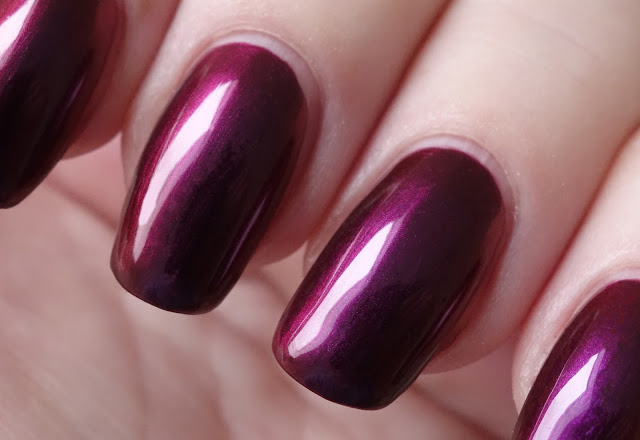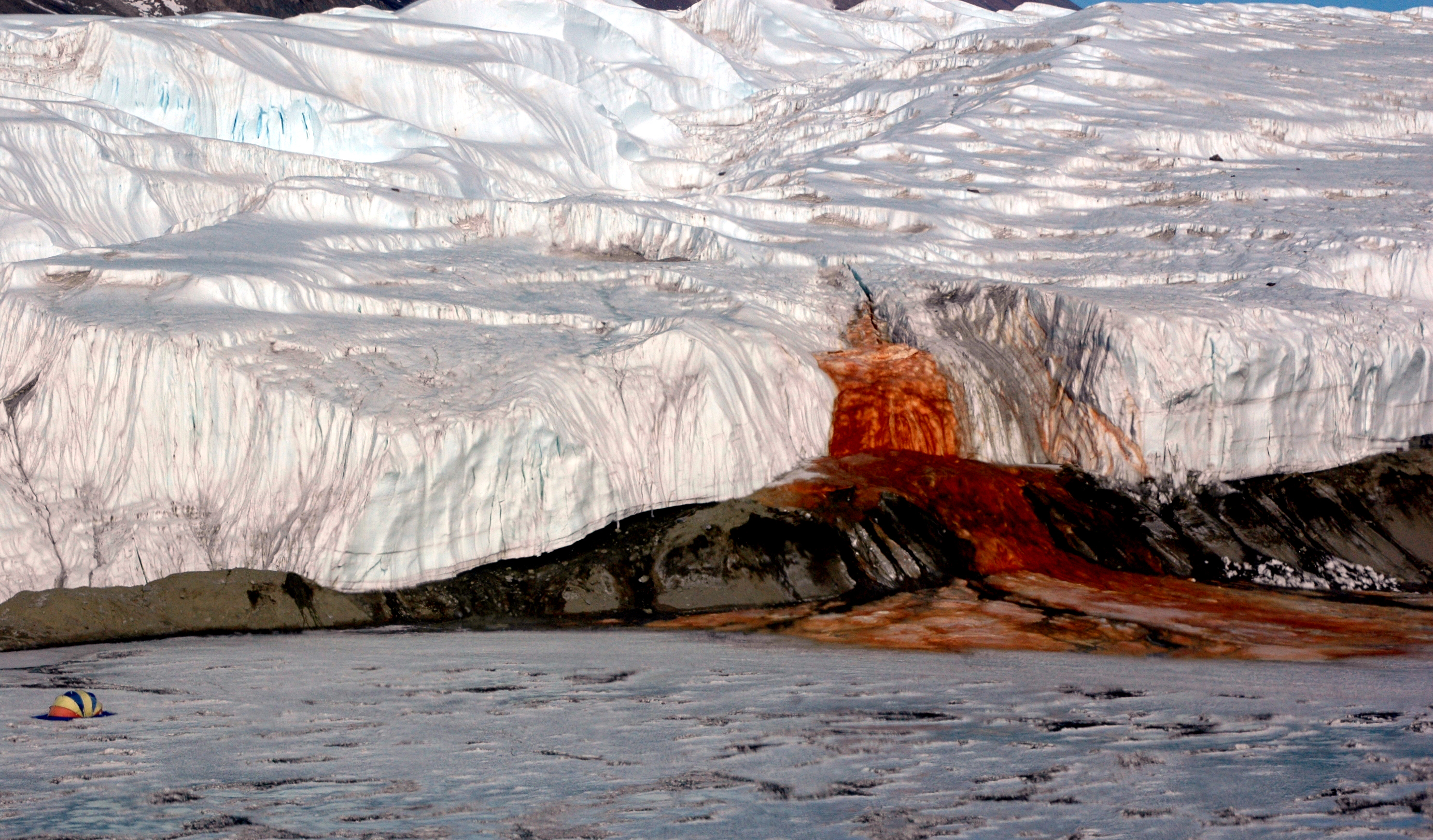Application was a messy affair. The consistency of Taylor Glacier is fluid, oily and smooth with a languid, thicker viscosity that I found difficult to work with. Somehow I just don't get the physics of painting with thicker formulas -- I can't seem figure out how to take advantage of the polish's natural flow over the nail without overloading the brush, which sooner or later leads to flooding. So it was with Taylor Glacier, which sets up rather quickly, further complicating my efforts. But I got it on there! Pigmentation is good, with evenly opaque coverage and full bottle color delivered in three coats. Luckily, cleanup was easier than I expected. There's some pigment travel but only a trace of residual staining. Taylor Glacier dries naturally in very good time to a smooth, slightly flat finish that wants a good topcoat to look its best. Topcoat also seems to accentuate the glowing, semi-metallic nature of the multichrome pigment.
Photos show three coats of Taylor Glacier over treatment and basecoat with a topcoat of Seche Vite.
 |
| Elevation Polish Taylor Glacier |
 |
| Elevation Polish Taylor Glacier |
 |
| Elevation Polish Taylor Glacier |
 |
| Elevation Polish Taylor Glacier |
 |
| Elevation Polish Taylor Glacier |
 |
| Elevation Polish Taylor Glacier |
 |
| Elevation Polish Taylor Glacier |
 |
| Elevation Polish Taylor Glacier |
 |
| Elevation Polish Taylor Glacier |
 |
| Elevation Polish Taylor Glacier |
 |
| Elevation Polish Taylor Glacier |
 |
| Elevation Polish Taylor Glacier |
 |
| Elevation Polish Taylor Glacier |
 |
| Elevation Polish Taylor Glacier |
 |
| Elevation Polish Taylor Glacier |
 |
| Elevation Polish Taylor Glacier |
 |
| Elevation Polish Taylor Glacier |
 |
| Elevation Polish Taylor Glacier |
This polish is named for the Taylor Glacier in East Antarctica, a cold-based glacier about 54km/34mi long that flows into the western end of Taylor Valley to Lake Bonney in the McMurdo Dry Valleys area of Victoria Land. Where the tongue of the glacier touches the frozen surface of Lake Bonney, red iron-rich hypersaline water from a sub-glacial pool sporadically emerges from small fissures in the ice cascades, creating a feature known as Blood Falls.
 |
| Taylor Glacier, Taylor Valley and Blood Falls, 2013. (source) |
 |
| Blood Falls seeps from the end of the Taylor Glacier into Lake Bonney. The tent at left provides a sense of scale for just how big the phenomenon is. Scientists believe a buried saltwater reservoir is partly responsible for the discoloration, which is a form of reduced iron.. Credit Peter Rejcek, 2006. (source) |
The stunning multichrome spectrum and effects in Taylor Glacier are similar to those of my favorite multichrome polish ever, CrowsToes Indian Summer. These purple/red/gold shifters create particularly bold colors, which I associate with those brief moments just after the sun goes down, when the vivid hues of sunset burn intensely on the horizon, filling the very air with color, and the sky assumes that incredible shade of electric blue that precedes twilight.
love,
Liz
A stunning polish. This one is like Indian Summer on steroids. Just WoW!
ReplyDeleteI have trouble coping with polish that is either too thin or too thick. I try to do thin coats but some polish requires a more loaded brush, which I really don't like to do. If it's thin, it gleefully heads straight for the sidewalls and, if too thick, I end up with thick edges by the sidewall that look like the polish is channeling the tall edge/end of the glacier at Glacier Bay. LOL, so frustrating! I know such problems don't count for a hill of beans with all else in life, but, still...
Those application details are the accumulated observations of an attentive, discerning mind, Lara, which is a GREAT thing to have imo. Especially as the years pass!
DeleteThis polish gave me fits. I took way too many photos trying to capture the color shifts, which then took forever to go through, compare, crop and edit.